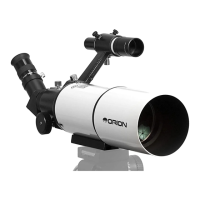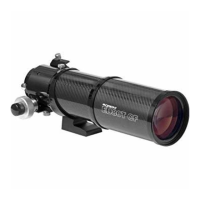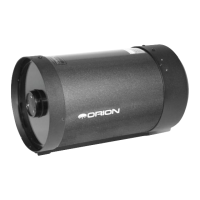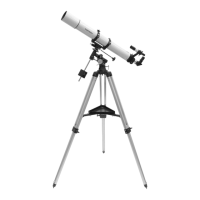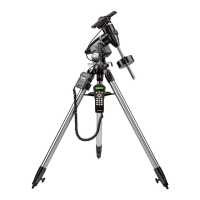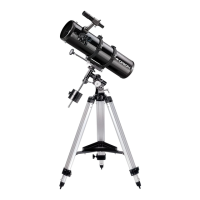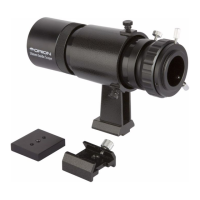9
does. A ashlight with a red LED light is ideal. Beware, too, that nearby porch,
streetlights, and car headlights will ruin your night vision.
“Seeing” and Transparency
Atmospheric conditions vary signicantly from night to night. “Seeing” refers to the
steadiness of the Earth’s atmosphere at a given time. In conditions of poor seeing,
atmospheric turbulence causes objects viewed through the telescope to “boil.” If
you look up at the sky and stars are twinkling noticeably, the seeing is poor and you
will be limited to viewing at lower magnications. At higher magnications, images
will not focus clearly. Fine details on the planets and Moon will likely not be visible.
In conditions of good seeing, star twinkling is minimal and images appear steady in
the eyepiece. Seeing is best overhead, worst at the horizon. Also, seeing generally
gets better after midnight, when much of the heat absorbed by the Earth during the
day has radiated off into space.
Especially important for observing faint objects is good “transparency”—air free
of moisture, smoke, and dust. All tend to scatter light, which reduces an object’s
brightness. Transparency is judged by the magnitude of the faintest stars you can
see with the unaided eye (5th or 6th magnitude is desirable).
Tracking Celestial Objects
The Earth is constantly rotating about its polar axis, completing one full rotation
every 24 hours; this is what denes a “day”. We do not feel the Earth rotating, but
we see it at night from the apparent movement of stars from east to west. When
you observe any astronomical object, you are watching a moving target. This
means the telescope’s position must be continuously adjusted over time to keep
an object in the eld of view. This is easy to do with the FunScope because of its
smooth motions on both axes. As the object moves off towards the edge of the
eld of view, just lightly nudge the telescope tube to re-center it. Objects appear to
move across the eld of view faster at higher magnications. This is because the
eld of view becomes narrower.
Eyepiece Selection
By using eyepieces of different focal lengths, it is possible to attain many mag-
nications or powers with the FunScope. Your telescope comes with two 1.25"
eyepieces: a 20mm, which gives a magnication of 15x, and a 6mm, which provides
50x magnication. Other 1.25" eyepieces can be purchased to achieve higher or
lower powers. It is quite common for an observer to own ve or more eyepieces
to access a wide range of magnications. To calculate the magnication of a
telescope-eyepiece combination, simply divide the focal length of the telescope by
the focal length of the eyepiece.
Telescope Focal Length (mm)
Eyepiece Focal Length (mm)
= Magnication
